Boston Consulting Group (BCG) is among the top three largest and most prestigious management consulting firms; candidates must pass through high-stress, yet exciting consulting interviews called “case interviews”.
In this article, I’ll walk you through the fundamentals, techniques, tips, and tricks you can use to break through the case interviews that BCG typically use.
BCG case interviews overview
BCG recruitment process
There are three main phases BCG recruitment timeline – resume, tests and interviews. The whole process can take 2-3 months, and if the candidate is accepted, the job usually starts 6-12 months after application. New offices with higher HR demands and staffing shortages can be less clear-cut, but generally faster.
The first two are already covered by other articles on our website: Consulting Resume Overview and BCG Potential Test. Once you’ve passed those challenges, the final test is the case interview, where all the fun is.
If you haven’t grasped the basics of case interviews, I advise you to go and read this Case Interview 101 crash course – a “guidebook” written for both beginners and experienced case interviewees. Link is on the right.
Now, let us continue with BCG candidate-led cases.

BCG interview process
The typical BCG candidate can expect 4-6 interviews during a span of 4-8 weeks. The first 2-3 interviews are likely done by Engagement Managers, while later interviews are reserved for the more senior Partners or Directors. BCG interviews usually consist of two parts: Fit interview (10 minutes) and Case interview (30-45 minutes).
What does BCG look for?
BCG looks for the three core skills and qualifications in potential employees: problem-solving skills, leadership ability and achieving mentality. Prior business background is not required, but it’s highly advised for case interviews. Technical/industry knowledge is required for certain career tracks – such as at support centers.
- Problem-solving skills: To be specific, it’s the analytical aspect of problem-solving. This is the core of consulting work – breaking down business problems to find root causes and deliver solutions.
- Leadership ability: A consultant doesn’t just sit around, alone, analyzing stuff. A consultant works with his team, connects to relevant experts, then uses that expertise to convince clients to follow his plans. The work involves a lot of people influencing, so leadership skills are absolutely crucial.
- Achieving mentality: You simply can’t get far without this mindset. Management consulting is notorious for tight deadlines and heavy workload; you must always go the extra mile if you’re to survive in this industry.
- Business background: Consulting firms don’t explicitly look for people with business backgrounds, but fundamental business knowledge is necessary to pass the recruitment process. If you come from a non-business background, you definitely need to brush up on this aspect; check out our video on Case Interview Starter Guide for Non-Business Candidates for more details on what to learn.
- Technical skills: If you’re applying for specialist roles you may be questioned on technical skills besides the usual case interviews. Precisely which skills are tested will differ according to the role and office, so check on their websites or contact the office for the details before going.
In BCG case interviews, each candidate must successfully display the following five attributes – among which the first three are crucial to consulting. In the Case Interview End-to-End Secrets Program, I’ll teach you how to demonstrate all of these attributes effectively, both in the case interview and the PEI.
BCG case interviews format
“Case interview” – What does it mean?
A case interview is an interview with a business contextIn a case interview, you are given a business problem and asked to solve it – that problem, together with the whole surrounding business context, is called a case.
“The Pirate Company, based in the Caribbeans, offering assets removal services to ships in the area, is suffering from negative profits. They want you to look into the cause and solve it.”
In this case, the problem is decreasing profits. If you are the candidate, you’re supposed to find out what’s causing it, and most of the time, also how to fix it.
What are BCG case interviews like?
BCG case interviews are often candidate-led. At the most extreme of this format, the candidate “leads” the problem-solving process breaking down the problem through an “issue tree” and hypothesizing for the root causes. The interviewer assists the candidate by supplying data to test their hypotheses. There are two extremes in terms of the autonomy you’d have in a case interview. On one end of the spectrum, in a candidate-led case, you lead the problem-solving process. On the other end, in an interviewer-led case, the interviewer tells you what to do.

If the aforementioned Pirate case were interviewer-led, you’d answer a series of questions coming from the interviewer.
This time, however, it’s a candidate-led case, so you’ll instead actively break down the big profit problem and look for the root cause.
Candidate-led cases focus on one big problem
In candidate-led cases, you solve the problem in its entirety, not through small questions as in interviewer-led cases.
As with all kinds of cases, a top-down approach is of prime importance. You are not supposed to yield solutions immediately, but to break the problem down into small parts and tackle each at a time. That’s how real consultants solve problems, not showing it in an interview will ruin your chances.
To solve The Pirate Company’s profit problem, you would first break the profits down into revenues and costs, then dive into each subdivision. This method ensures you cover all possible factors leading to the original problem, to deliver the most in-depth and comprehensive answer.
Candidate-led cases are more flexible
In candidate-led cases, you are free to analyze the problem as you see fit.
The interviewer usually has a “case universe” in mind – basically a fictional world formed by data on the supposed client and their problem. You’re allowed to freely explore this world.
Even if you venture out of the scenarios imagined by the interviewer through unexpected issue trees and solutions, he/she will most likely come up with new information on the fly to help you solve the case in your own way.
Suppose, in the Pirate case, the interviewer intended to have the costs divided into ship costs and crew costs; you, on the other hand, segment the costs into daily operations costs and battle costs, reasoning that battles don’t happen every day and their costs vary significantly.
If this was an interviewer-led case, the interviewer would likely direct you to ship and crew costs through pre-determined questions. In a candidate-led case, though, he’ll most likely play along and derive some data on operations and battle costs for you.
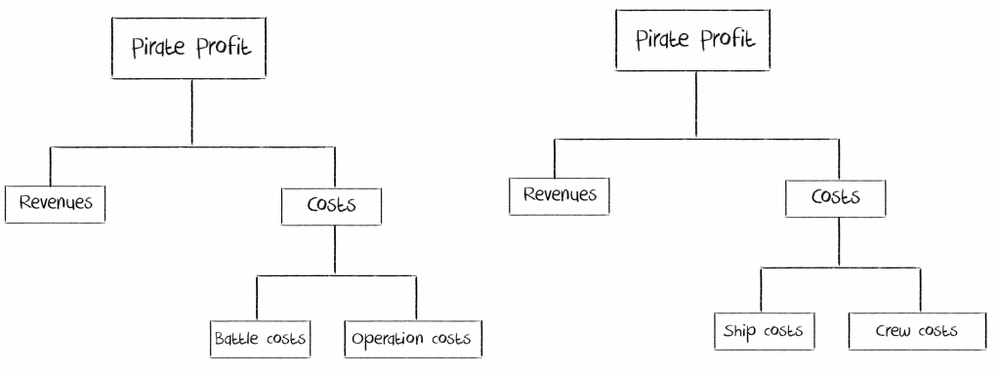
Candidate-led cases place less emphasis on being right
You are allowed a larger margin of error in candidate-led cases than in interviewer-led ones.
In candidate-led cases, you have to break down the problem all by yourself, with very little assistance from the interviewer. As such, you can be “forgiven” for larger errors than in interviewer-led cases, where you are effectively guided through that process.
Interested in learning about the interviewer-led side of the spectrum? Wanting to know about the mechanisms of case interviews at McKinsey – the most prestigious management consulting firm? See this extensive guide on interviewer-led case interviews at McKinsey.
BCG case interview fundamentals
Candidate-led case interviews are much more similar to real consulting work than their interviewer-led cousins; as such, you need to approach these cases in the same way real consultants approach their projects – using the fundamental concepts of consulting problem-solving.
There are seven concepts: Problem, Root Cause, Issue Tree, MECE, Hypothesis, Data, and Solution.
Concept #1: Problem
Every case interview starts with one well-defined problem, which is accompanied by a specific objective. To illustrate the principles, I’ll be using a simple, daily-life problem:
There are cockroaches in my apartment. How can I eliminate them?

Concept #2: Root cause
Solutions can only have long-term effects if the root causes of the problem are identified and attacked.
Most problems are at the end of a long chain of causes and consequences; failing to identify the start of the chain ensures that the problem will come back to haunt you. Think of draining a bathtub without turning off the faucet – it just doesn’t work.
Spraying insecticide on cockroaches that stray into my apartment may help with my inner peace for a while, but that peace will be disturbed again if the source of those cockroaches (the root cause) remains on the face of the Earth.
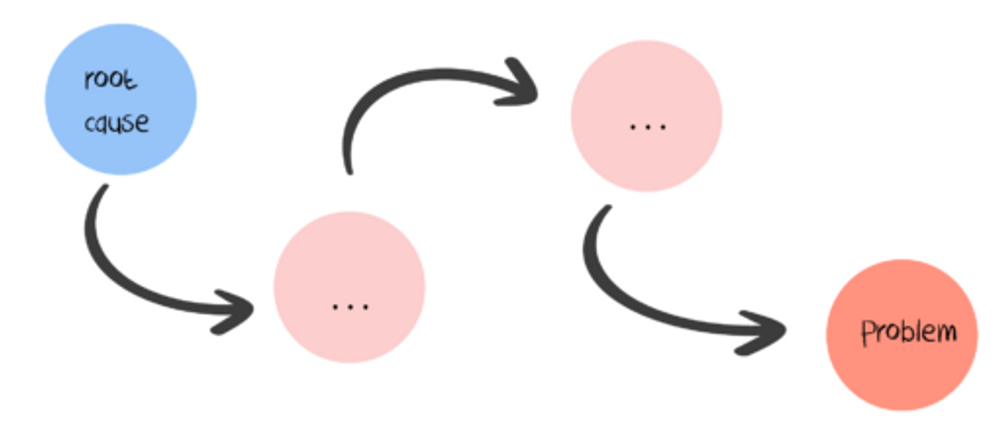
Concept #3: Issue tree
An issue tree helps you identify all the root causes efficiently and effectively.
In an issue tree, the problem is broken down into multiple branches, each corresponding to a contributing factor. Each branch is in turn broken down into sub-branches. This breaking down allows the problem-solver to pinpoint each and every root cause.
For an issue tree to work as intended, it must adhere to a principle that’s a signature of the consulting world – MECE.
I did not exactly draw an issue to kill the cockroaches, but if I did, it would look like this:

Concept #4: MECE
This acronym stands for “Mutually Exclusive, Collectively Exhaustive”, which means there’s no overlap between the branches, and all branches together cover every possibility, i.e there’s no gap.
Besides these basics, the MECE principle actually has several “advanced” rules:
- Parallel items: Every branch in a MECE issue tree must be on the same logical level.
- Ordered list: The branches should be arranged in a logical order (e.g: A, B, C instead of C, A, B)
- Rule of Three: The best, most intuitive number of branches in a MECE issue tree is 3. It’s fine to go with 2-4, even 5 can be acceptable sometimes, but an issue tree with 6 branches or more is extremely difficult to work with.
- No interlinking items: There should be as little interdependence between the branches as possible, to avoid one root cause showing through multiple branches.
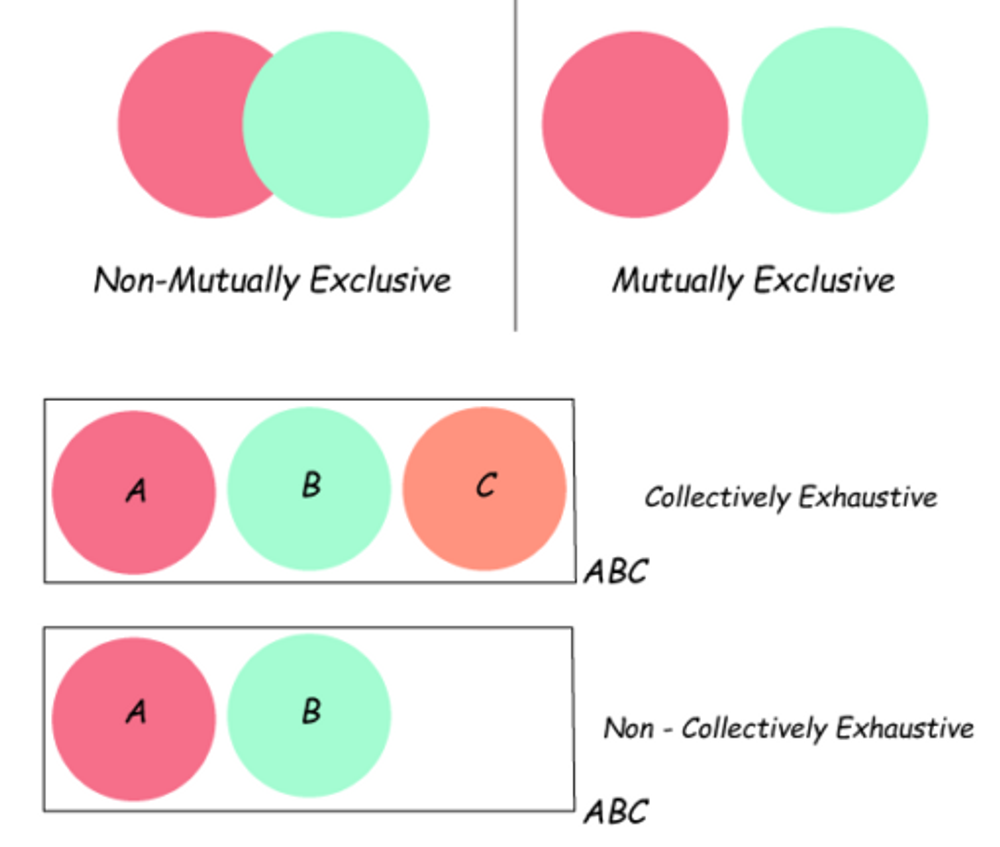
This MECE principle is a must-know for every prospective consultant. You’ll be hearing this word a lot in the consulting industry: “I like your idea, but your issue tree is not MECE enough”.
The division of the search into “inside” and “outside” pretty much covered every possible location, and there’s no overlap between them, so it’s MECE.
Concept #5: Hypothesis
A hypothesis, the context of consulting problem-solving, is an educated guess that one certain branch is the most likely to contain the issue tree.
Hypotheses must follow the issue tree, be top-down, and be based on existing information.
Hypothesizing allows the consultant to prioritize the most probable “culprits”, making the problem-solving process much more efficient.
If the root cause is confirmed to be inside one branch, drill down to find it; otherwise, move sideways to another branch on the same level. Rinse and repeat until every root cause is identified.
I noticed that I often saw the cockroaches near the door, coming in, so it would be unwise to hypothesize that the source is inside my apartment. As such, I began my search from the outside.
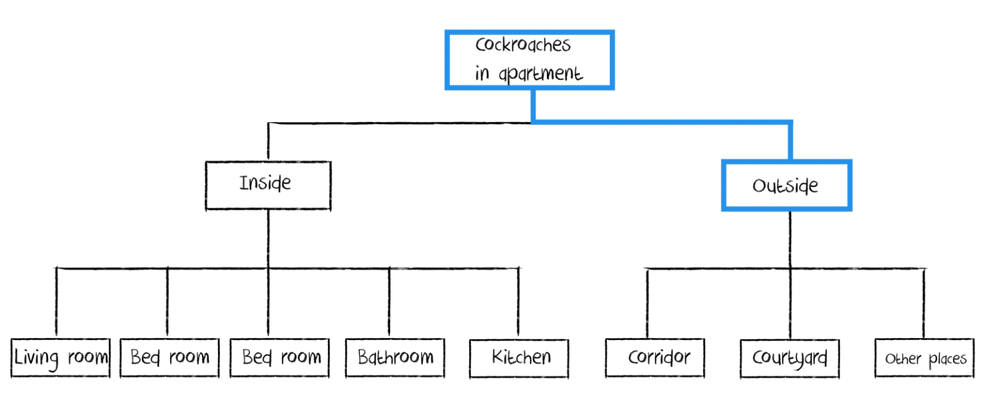
Concept #6: Data
A hypothesis must always be tested with data – facts and figures related to the problem.
One piece of data standing alone may not yield significant insights; in those cases, we compare them with reference points benchmarks, of which the two most common kinds are “historical” and “competitor”.
The aforementioned piece of data is not enough to verify that the cockroaches come from outside, so I asked my neighbors if they also saw an increase in cockroaches; they mostly said “yes”, so I was able to confirm that hypothesis. Fast forward a short while, I located a site of infestation at the end of the corridor before the building.
Concept #7: Solution
After the analyzing process, it’s time to deliver solutions.
A suitable solution must be actionable – if the proposal is not feasible, it’s as good as useless.
The solutions must attack all the root causes to ensure long-lasting impact – if even one root cause remains untouched, the problem will persist.
In case interviews, you must also pitch your solutions in a structured fashion, by separating them into neat and meaningful categories (usually “long-term” and “short-term”).
I’d love to use a flamethrower and burn those nasty cockroaches, but that would reduce the whole building to ashes, so I had to make do with insecticide (short-term) and cleaning up the place (long-term).
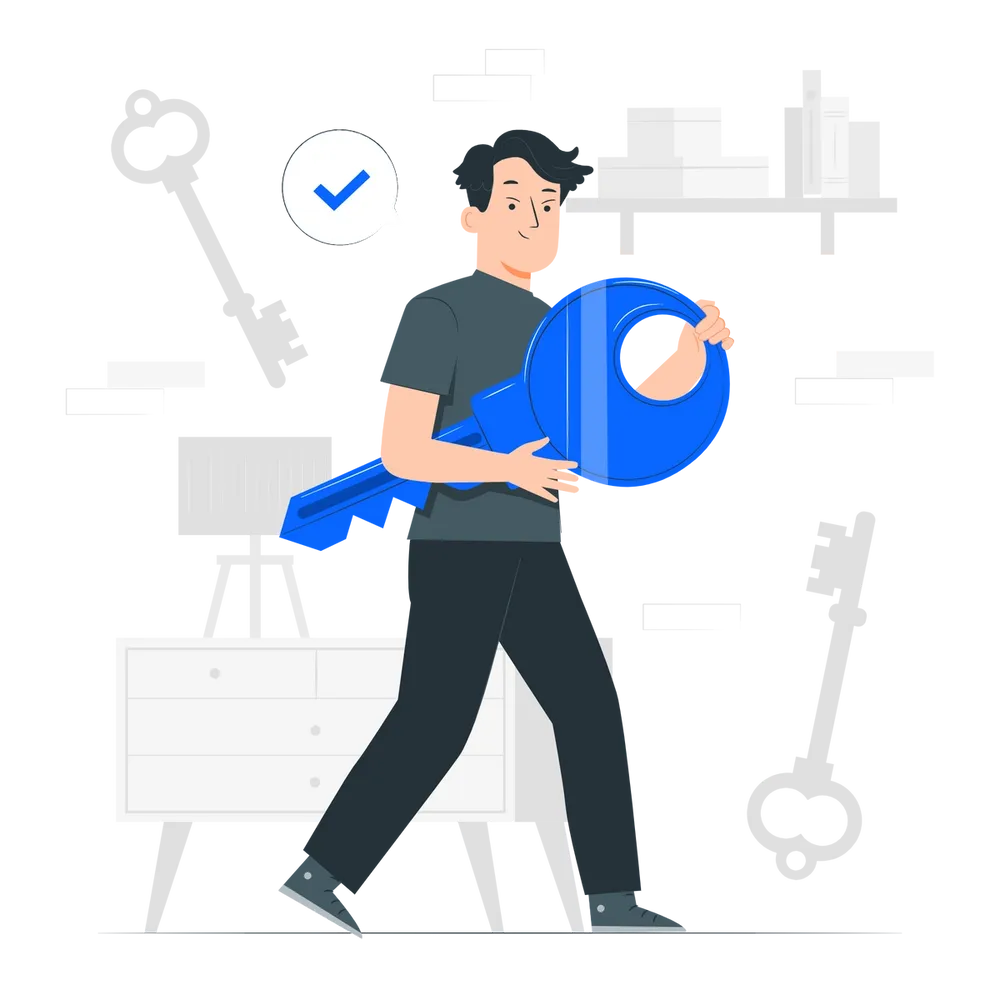
BCG case interview frameworks
Frameworks are off-the-shelf templates to break down problems.
On the one hand, these frameworks, to a large degree, follow the fundamental concepts we’ve just discussed, hence their convenience in case interviews. Most of them are also fairly intuitive. On the other hand, their generic nature necessitates a lot of customizations for consulting work and case interviews, where cases don’t usually fit neatly into the frameworks.
I also wrote another article on Case Interview Frameworks, with tips and techniques in case interviews, as well as some myth-busting on common misconceptions about frameworks.
Anyhow, here are five frameworks you can use to solve your cases:
- Profitability Framework: Splits Profits into Revenues and Costs; mostly used to mathematically break down problems before switching to qualitative frameworks for solutions.
- Business Situation Framework: Analyzes a company situation in four areas: Company, Competitors, Customers, Products; flexible for many purposes but generic, needs customizations.
- McKinsey M&A Framework: Assesses a proposed M&A on three aspects: stand-alone values of each involving company, their synergy, and “other factors”. MECE and promoting customizations, this is one of the best M&A frameworks.
- 4P/7P Marketing Mix: The 4P analyzes the Product, Price, Place, Promotion for marketing tangible goods; the 7P adds People, Process and Physical Evidence to the mix, meant for service marketing. This framework focuses solely on the marketing aspect, so not suitable for multi-function strategies.
- Porter’s Five Forces Model: Analyzes the industry surrounding a business, on five aspects or “forces” – Suppliers, Customers, Competitors, New Entrants, and Substitutes. Good for getting the “big picture” about the industry and understanding the client’s context.
Along with the frameworks, there are these powerful, universal problem-solving tools which I term “mini frameworks”. Here are five of them:
- External vs Internal: This is a quick and easy method to segment information about a particular entity. The internal branch concerns what’s inside or intrinsic of the said entity, the external branch the outside.
- Qualitative vs Quantitative: This mini-frameworks is mostly meant for evaluations. By dividing items into two MECE groups, it reduces confusion and minimizes the risk of missing an important item.
- Costs vs Benefits: This decision-making tool is pretty straightforward – if the benefits outweigh the costs, you go with that option.
- 2×2 Matrix: The 2×2 Matrix is a decision-making tool where options are examined using two criteria, each of which forms an axis of the matrix.
- SWOT Analysis: This mini-framework is seldom used in case interviews, being too generic; however, it can be used for a quick and easy evaluation of a company’s positioning within the industry context.
BCG case interviews tips
To help illustrate the following tips and techniques, we’ll again visit The Pirate Company. In the Case Interview End-to-End Secrets Program, you can find countless such tips throughout the 10 case videos of the Tips and Techniques package.
Tip #1: Deliver a structured and friendly case opening
Although a case lasts about 30 minutes, the verdict is almost determined within the first 3 minutes. That means if you have a perfect opening, you stand a much greater chance of getting an offer.
Here are seven steps to deliver that perfect opening:
Step 1: Show appreciation
Everyone loves a compliment, so give a sincere one to your interviewer.
“Thank you for this very interesting case, I’m happy to get the chance to solve it”.
Your interviewer is not HR personnel; he’s spending time and effort on you as a form of goodwill for the company. Those simple, thankful words go a long way.
This works best at the start, but you should show appreciation throughout the case (e.g.: when the interviewer gives you useful data or feedback).
Step 2: Announce case introduction
Explicitly and concisely announce that you’re going to do the following steps 3, 4, and 5.
“I’m going to recap the case and ask for some clarifications, just to make sure that we’re on the same page. Then I’m going to inform you of my approach to this case.”
This is related to what I term “map habit” which I’ll explain soon enough because it’s a habit you must have during the whole case interview.
Step 3: Recap
Playback the case to make sure you concretely understand it.
There’s nothing worse than realizing you’ve been spending all resources trying to solve the wrong problem; thus, consultants always try to be absolutely clear what the client wants and what they’re facing.
Do the same in the case interview and you’ll get a lot of plus points; make sure you know (1) who the client is, (2) the situation the client is in, and (3) the case questions and objectives.
“So here’s how I understand the case: our client is The Pirate Company, stationed in the Caribbeans, and provides assets removal services; the Company is having negative profits; our objective is to deliver a solution to that problem. Am I correct?”
Step 4: Clarify
Ask questions to clarify any confusing and unclear parts you have about the case.
Most often, there are three kinds of information to clarify at this stage: definitions, time frame and measurement.
“Great, now I’d like to ask three clarification questions:
1. What kind of assets does our client remove for their customer ships?
2. How long has the negative profit problem been going on?
3. How long can our client continue the business with negative profits, i.e what’s the deadline for our solutions?”
Step 5: Announce the case approach
Announce the overall logical flow of the upcoming case.
This logical flow depends on the type of case. The most common type is “problem-solution”, where the flow is (1) break down the problem into small parts, (2) set up the hypotheses, (3) ask for data to test hypotheses, (4) identify the root causes, and (5) deliver solutions.
“For the overall approach, to ensure long-lasting impact for our solutions, I’m going to try and break down the problems into small pieces with issue trees, then drill down to isolate and identify the root causes, while also gathering data to draw actionable solutions.”
Step 6: Align
Remember to check if the interviewer agrees with your approach, at the start and at each key step in the case!
In real consulting projects, managers expect junior consultants to align early and often, because no one wants their team going in the wrong direction for a whole week!
In case interviews, simply ask “Does this sound like a reasonable approach to you?”. Often you’ll get the green lights, however, there is a chance the interviewer will suggest an even better approach!
Step 7: Ask for timeout
If you need time to think, ask for it! This applies not only at the start of the case, but throughout!
“I need some time to collect my thoughts and develop my issue tree, so may I take a timeout?”
Don’t just rush into the case and then later try to fix all the errors you could have avoided if you spent some more time thinking. It’s a really bad habit and no manager wants their junior consultants to act like that in real projects.
Beware though, once you’ve asked for timeout, you need to come back with something worthy; don’t spend 90 seconds just to divide profits into revenues and costs.
Additionally, this early in the case, don’t drill down; save that for later, because you have yet to get a clue where the problem is. What if you drill down two levels on the Revenue side, just to have the first piece of data informing that the problem is on the Cost side?
Tip #2: Use personal interview scripts
To nail all of these steps and still come about as naturally, as well as save your brainpower for the analysis part, what you’ll definitely need is a personal interview script.
In the Prospective Candidate Starter Pack, I’ve included one such script – written from my own experience at McKinsey and after McKinsey, interviewing hundreds of customers. You can download the whole pack – along with the script, and one case interview example.
Tip #3: Use the map habit to check the case progress
Pause occasionally to summarize where you are, and where you’re going next!
I call it the “map habit” because it’s so similar to using the map when travelling.
This is a habit that I repeatedly stress in the Case Interview End-to-End Secrets Program, because of its importance both in case interviews and in my consulting experience. It gives you a sense of direction as well as authority; additionally, you get plus points in the interview for an organized approach.
Suppose you’ve explored The Pirate Company’s “Revenue” branch, with data suggesting the problem is not coming from that branch, you’re supposed to sum up your findings about the revenue branch up till now then announce you’re going to explore the “Cost” branch in consideration of those findings.
Tip #4: Always speak in a structured manner
Always speak in a very structured fashion, when you do not, announce in advance.
I can’t stress enough how prospective consultants must be structured in everything they do. Every word they speak must reflect that structured mindset.
Here are three tips for structuring your speech:
- Begin with a summary line, stating the most important takeaway/intention.
- Divide what you intend to say into clear-cut parts. Avoid jumping back and forth between items as much as possible.
- Number your items so it’s easier to keep track, both for you and your interviewer. Even better if you announce in advance how many items you’re going to discuss.
Take a look again at the opening parts and you’ll see these tips being applied.
If you desperately need to speak in an unstructured fashion, just ask “May I think out loud for a short while?” – the interviewer will allow unstructuredness for that mode; however, you do need to restructure your ideas once the “verbal brainstorming” session is over.

Tip #5: Avoid long moments of silence
Don’t allow long, awkward moments of silence in your interviews – ask for timeout or announce think-out-loud mode.
A timeout is a great excuse to think in silence; however, too long and it will backfire, especially if you can’t come up with something worthy of the long wait.
Use it prudently, and always try to think as fast as possible while still being “correct”.
Thinking out loud is especially good if you need a lot of time to brainstorm, and you want some feedback from the interviewer during the process. Again, however, limit your use of this out-of-jail card; too many “think-out-loud” sessions will create the impression that you’re unorganized.
Tip #6: Always stick to the hypotheses
Always speak with the current hypothesis in mind, and that hypothesis must be in the issue tree.
The whole point of this hypothesis-driven approach to problem-solving is to have your efforts guided by hypotheses and not wasted aimlessly. Drawing out the issue tree and forgetting it, is like buying a car and then going everywhere on a bicycle.
That said, even the best and brightest people forget their hypotheses in the midst of overwhelming data. To avoid such a situation, do yourself a sanity check every once in a while, look back at your issue tree; if what you’re doing doesn’t match your current position on it, go back immediately!
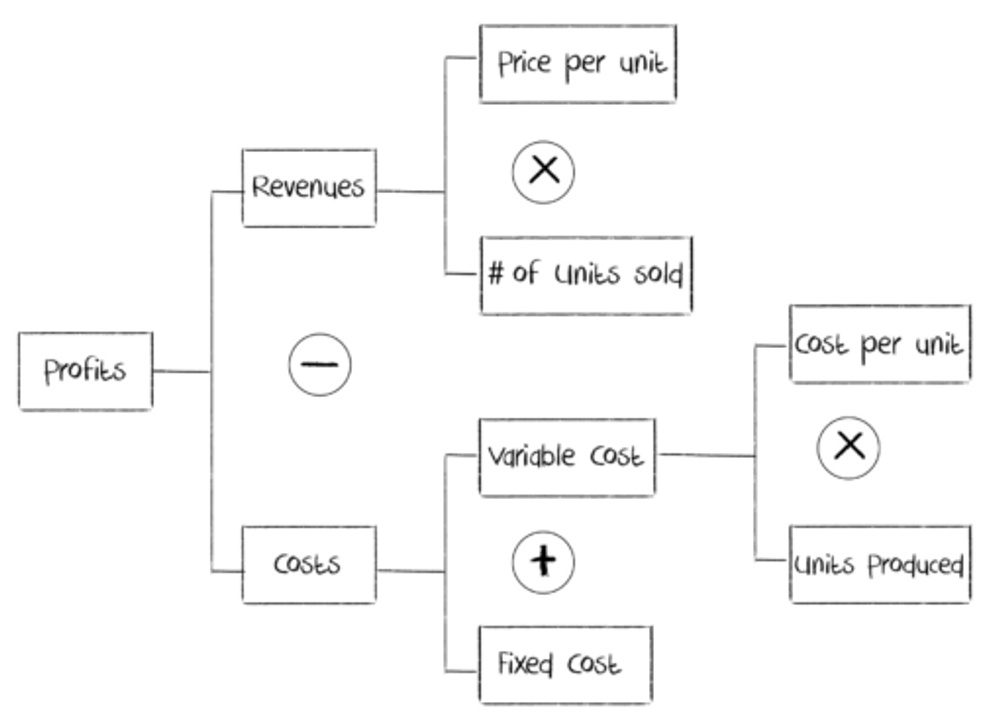
Tip #7: Take notes using three separate sheets – data, presentation, scratch
Use three types of notes for your case interviews: data, presentation, and scratch paper.
When the interview starts, pull three sheets of paper and label them accordingly.
You’ll use the data sheet to jot down and process any data the interviewer gives you, as well as your calculations; the presentation sheets to draft things you’ll say to the interviewer; and the data sheet for anything else you need to write out, such as your ideas when brainstorming.
For one thing, neat notes really help with your thought process, because it eases the storing and arranging of information you receive. For another, you’re showing the interviewer that you’re an organized and careful person.
For the example case, the notes may look like this:
| Data | Presentation | Scratch |
| Client profits Jan: $42,000 Feb: $43,000 Mar: $47,000 Apr: $25,000 May: $26,000 Jun: $25,000 |
Profits -> Revenues |
Why the sudden decrease? |
Tip #8: Make the final pitch short and result-oriented
Your final, solution pitch must be concise and result-oriented.
Imagine you’re in the elevator with the client CEO (or in the example case, the Chief Captain) and he asks for your findings – you should be able to deliver it before the elevator arrives at its destination floor! This is a “question” they ask at the end of a case interview.
The pitch should always begin with the root causes, immediately followed by your recommendations – client CEOs don’t have much time to waste on the procedure, so no need to bring it up – and lastly, end your pitch in a client-friendly fashion, saying “We’d be happy to work with you to implement the solutions”. Voila, you’ve nailed that pitch!
Tip #9: Know how you can get stuck in cases, and how to avoid
I’ll point out three common kinds of “stuck” in a candidate-led case, and how to overcome each.
The Data “Stuck”
If you got a piece of data and don’t know what to make of it, ask for benchmarks.
Benchmarks are the easiest way to put data into perspective; the two most common benchmarks for comparison in case interviews are competitor figures and past figures. If the client’s data deviate from industry or historical trends, you know something is off with their business.
Make it explicit to the interviewer that you need the benchmarks to help with the issue tree.
“To see if it’s an external or an internal problem, and therefore locate the potential root causes, I need some data on the revenue of other pirate companies in the Caribbean.”
The Framework “Stuck”
If you don’t know which framework to use, go for “segmentation”
A lot of candidates get stuck after they’ve exhausted the first level of their issue tree. Sure, improving your business intuition helps you avoid this, but it takes time. Sure, learning more frameworks might help, but you will “framework-vomit” if you don’t know how to use them right.
The easy way out in this situation is to see how that item is usually segmented by the client or by the industry. If you’re not sure how they do it, ask the interviewer – remember to state your purpose clearly.
“It seems that the conventional breakdown of revenue and unit sales does not yield significant insights. My experience in the pirate industry is rather limited, so to draw a spot-on issue tree, may I ask how our client segment their revenue?”
The I-Can’t-Find-The-Problem “Stuck”
If you can’t point out where the problem is coming from, something’s wrong with your issue tree.
This is probably the most dreadful one, because you can’t even see clearly where you got it wrong. However, don’t panic – that’s the last thing an interviewer wants to see in a prospective consultant.
There are two possibilities here:
- Your issue tree is not MECE
- Your issue tree is MECE, but it’s set up in a way that doesn’t isolate the problem.
Either way, admit you’re having a problem, and ask for a timeout to fix it. Do it with style, here’s something you can use:
“My analysis seems to go into a dead-end, which means either part of my issue tree is not MECE or my method of breaking down does not isolate the problem. Either way, I’d like to take a timeout to have another look at it.”
Just saying this already scores some points for you, and rest assured, no interviewer will refuse.
An example from End-to-End secrets program
Here’s a candidate-led example case from our Case Interview End-to-End Secrets Program!
This sample case is a great example of all the techniques I’ve told you about, because while the candidate does have good business intuition, his techniques need a lot of fine-tuning.
Besides what we’ve discussed, the Case Interview End-to-End Secrets Program features countless other instant-result tips and techniques for case interviews.
You have got a really good example, but you still want to practice your own case?
Book a meeting with former consultants at MConsultingPrep. These coaching experts will practice a specific candidate-led case interview with you, giving you the most detailed and concrete feedback and suggesting the most suitable improvement methods.
How to prepare for BCG case interviews?
Step 1: Familiarize with candidate-led case examples
Watch examples of candidate-led case interviews to familiarize yourself with the flow of the case, and how to interact with the interviewer.
BCG has several sample cases on their websites:
- BCG Case – Driving Revenue Growth
- BCG Case – Crafting a Distribution Strategy
- BCG Interactive Case Library
Step 2: Practice consulting math
Consultants have to deal with a large amount of quantitative data; therefore, math skills are a must.
You probably hate math as much as I used to; however, that’s no reason to back down. I have a few personal tips I used to ease up my math practice; try them, you’ll find math much more enjoyable (or less tedious, if you don’t believe math can be enjoyable).
- Use Your Head: Do all your daily calculations mentally unless an EXACT answer is required.
- Flatten the Learning Curve: At the start, a piece of scratch paper and a 5% margin of error really help; once you are confident, discard the paper and narrow down the margin.
- Establish a Routine: Allocate some time for daily practice; this may seem hard at first, but once you’ve overcome the inertia, you can literally feel the improvement.
Step 3: Develop business intuition
As I said earlier, business knowledge and intuition is necessary to win a consulting offer.
Improving this aspect is a gradual process; start early and take your time; slowly, those business insights will become part of your instinct. Here’s how I did it myself:
- Written Sources: I suggest reading business papers daily; you can also visit McKinsey, Bain and BCG websites for their excellent articles. Beware though – it’s not the pages you read that count, but the insights you draw from them.
- First-hand Experience and Observations: Don’t just come to your workplace to work; try to examine what senior managers are doing – what’s the rationale for their decision, and how has it impacted the organization?
Step 4: Learn the fundamentals and frameworks
Master the use of hypotheses, issue trees, MECE principle and the frameworks – they are the backbone of candidate-led case interviews.
At the beginning it may be tempting to focus on the frameworks – if you make this common mistake, be prepared for some very unpleasant surprises in the interview. Frameworks need a lot of customizations to fit with real cases, and to customize effectively you need that fundamental knowledge.
Fortunately, problem-solving fundamentals are something you can practice daily – I already demonstrated how it can be applied to a task as simple as finding lost keys.
Of course, don’t draw an issue tree for all your daily problems – that’s just overkill; but do take a structured approach, and picture an issue tree in your head while searching for your keys.
Step 5: Perform mock interviews
The best way to train on something is to do it.
Find yourself a former consultant to help you practice; they’ve been through countless case interviews, both real and mock, they know what’s required of a candidate, so they’re the best people to run your simulations with. Connect with experienced coaches here.
Study your cases in the utmost detail. Replay them over and over and over again, take notes of the interviewer’s feedback and look for other areas you can improve.
BCG written case interview
What is a written case interview?
A written case interview is a case interview where you receive the questions and data, as well as deliver your recommendations in written forms of communication. Here are some details about BCG Written Case.
BCG Written Case
Length: 50-60 slides
Preparation time: 2 hours
Interview time: 30 minutes
Product form: PowerPoint slides
(Information acquired from BCG websites, June 2020; may vary depending on office)
As you may have realized through the table, written case interviews test not only your analysis, but also your ability to select relevant data, handle time pressure, and present recommendations. It really does simulate the daily job of a management consultant, not just focusing on the analyzing process.
Surely, all the principles of regular case interviews will apply, but how can you effectively showcase the abilities tested uniquely by the written case?
How to nail the written cases
Here’s how you can demonstrate that you possess the qualities tested in written case interviews:
Skim and scan
Skim the data for an overall picture, then scan only for things that back up your analysis.
Waste no time on irrelevant data. Always dive in with a clear idea of what to look for – in this case, data that answers the questions or back up your conclusions.
Since this is a common speed-reading technique, you can practice it daily. When reading newspapers, for instance, ask yourself questions about the matters discussed, then specifically look for answers in the articles.
Timebox your activities
To ensure effective time management, allocate a precise time limit for each activity.
When that time limit is nearly over, quickly wrap up what you’ve been doing (e.g: skimming data) and move to the next (structuring the problem).
In a perfect world, the time limits for all activities together equals the preparation time of the case; however, in such a pressured setting, you are bound to make mistakes, so set aside some time for contingency.
Present recommendations first
Tell them your solutions first, explain later!
Real consultants do it in their work – their chart titles contain the most valuable insights, their presentations and pitches start with the conclusion. Their clients don’t care that much about the procedure – it’s the results that counts.
You are a prospective consultant, so act the same in case interviews, even the regular cases, but especially the written ones.
BCG fit interview
BCG fit interview topics
Most fit interview questions at BCG can be grouped into four common topics:
- Why you are interested in BCG/consulting
- Your hobbies and interests
- Your previous job (if you have one)
- Examples of leadership/achieving mentality/problem-solving skills
These topics together aim to assess two things:
- Whether you are “fit” with the organization – personality, motivation, etc.
- Whether you possess sufficient personal experience (i.e leading, handling conflicts, coping with work pressure, etc.) for the consulting world.
Unlike at McKinsey where they focus on personal experience, BCG place more emphasis on the “fit” part. Their interviews are generally less structured.
Why BCG/Why consulting?
For the first topic, the key is to be authentic and detailed.
You’ll almost definitely be asked to explain why you’re applying. When that happens, don’t recite the company’s marketing materials and become the umpteenth candidate with that same generic answer.
Research before you apply, not for the sake of the fit interview, but to thoroughly understand the industry and the companies. Then, pay attention to the unique features of each company, as well as the nature of consulting work, and see how they fit with your own preferences – that will become the basis for your answer.
Hobbies and interests questions
For these questions, implicitly connect your answers with consulting traits.
Don’t just say you like football, say you competed in a local tournament and became the best goalkeeper there (insert quantitative evidence for even better impact). If you play board games, mention that 10,000-member community you founded.
Don’t be afraid of showing unusual hobbies and interests – mine is paragliding, which is not exactly a popular sport in my country. You may pique the interviewer’s curiosity.
However, if your hobbies and interests involve something controversial (political and religious movements come to mind), my advice is to avoid mentioning them at all.
Previous-job questions
If asked about your previous job, you can be more flexible, either mentioning aspects similar to consulting traits, or to BCG cultures (such as when you analyzed your customers to devise better sales pitches, or when your boss allowed you to decide on the monthly sales plan).
However, do keep in mind to avoid negative comments about your former boss or colleagues. Talking behind one’s back is one of the auto-fail mistakes in MBB consulting firms.
Story-telling questions – Showing your consulting traits
The third topic is about telling a story of your consulting traits; which is why you should:
Take a Story-Based approach, not a Question-Answer approach.
Develop 3-5 well-rounded, detailed stories demonstrating all or most consulting traits (the three key ones being leadership, achieving mindset, and analytical problem-solving).
In the fit interview, tell those stories from angles that best reflect the traits being asked for.
Many candidates make the mistake of focusing on the possible questions and developing stories specifically answering those questions. The resulting stories are often one-dimensional, reducing the candidate’s flexibility in the interview.
There are three steps to develop a good fit-interview story:
Lay Down the Content Base
Look back on your past experiences and find stories that best reflect consulting traits (leadership, achieving mentality, problem-solving skills) and your personal values.
List down as many details of your stories as possible, make sure they follow this structure: Problem, Actions, Result, Lesson.
Form the Story Plot
Trim all the unnecessary details, then rearrange and amplify the rest to enhance the drama and to better reflect your traits. If your story is about overcoming politics to unite a team, mention how conflicting interests were destroying all team efforts.
If your stories have highly technical details, try to present them in a way your grandmother understands. Any story will be useless if the listener can’t relate to it.
Add the consulting spirit into the mix by emphasizing the relevant traits, telling your stories in a structured way, explaining all your actions, etc.
Refine Your Style
Tell your story in a style that entertains your listeners and yourself (finding a style will require a lot of practice, so be patient). This sounds really cliche, but if the style doesn’t feel right to you, discard it, you won’t be able to use it in an actual interview anyway.
Formalize your style. Steer clear of anything that can be perceived as negative and unprofessional: political jabs, self-deprecating jokes, excessive slang use, etc.
Four biggest mistakes in the fit interview
- Faking stories: Be as authentic as possible. The last thing you want is to be perceived as untruthful in an interview – and it’s not that hard to detect fake stories, which have no depth and are full of plot holes.
- Wasting time on ontext: Be result-oriented even in fit interviews – nobody has time or attention span for unnecessary context. Use just enough context to build tension then quickly move to action and results.
- Repeating stories: Vary your stories as much as possible. That will help you look more experienced in the interviewers’ eyes, and give them a multi-faceted view of the best you.
- Not focusing on oneself: Remember to stress your own value within the team. Teamwork is good, but talking about the team too much makes you sound like an insignificant cog in a machine, and that won’t impress anybody.
For an even more comprehensive guide on consulting fit interviews, see the article on Bain & BCG Fit Interviews and McKinsey PEI.
If you want to learn even more about the case interview and the secrets to landing yourself a consulting offer, subscribe to our Case Interview End-to-End Program!
/filters:quality(75)//case_thumb/1669790187129_bcg_comprehensive_bundle.png)